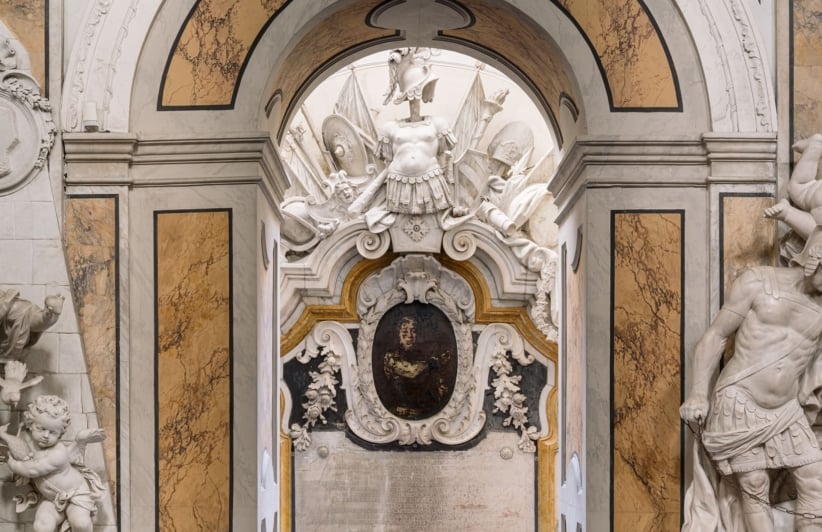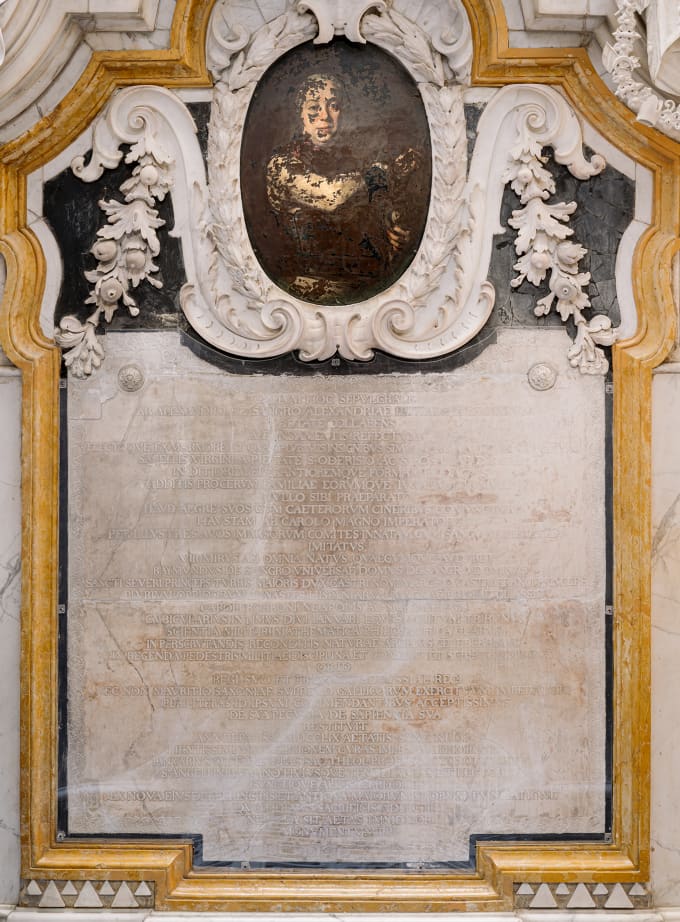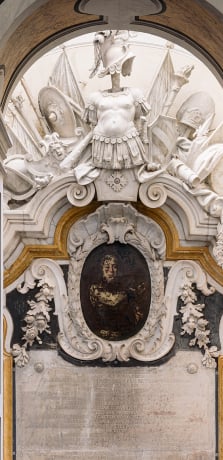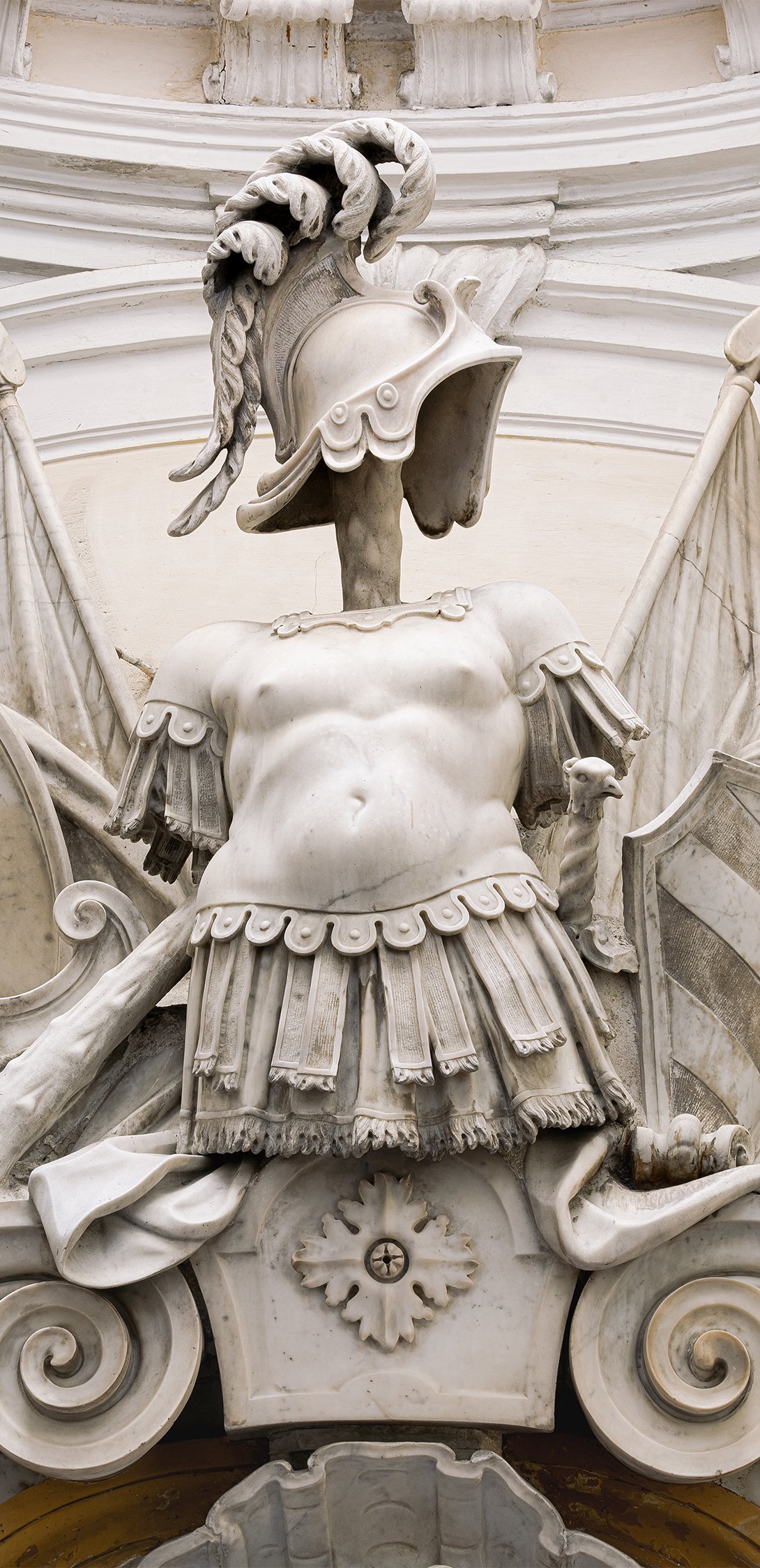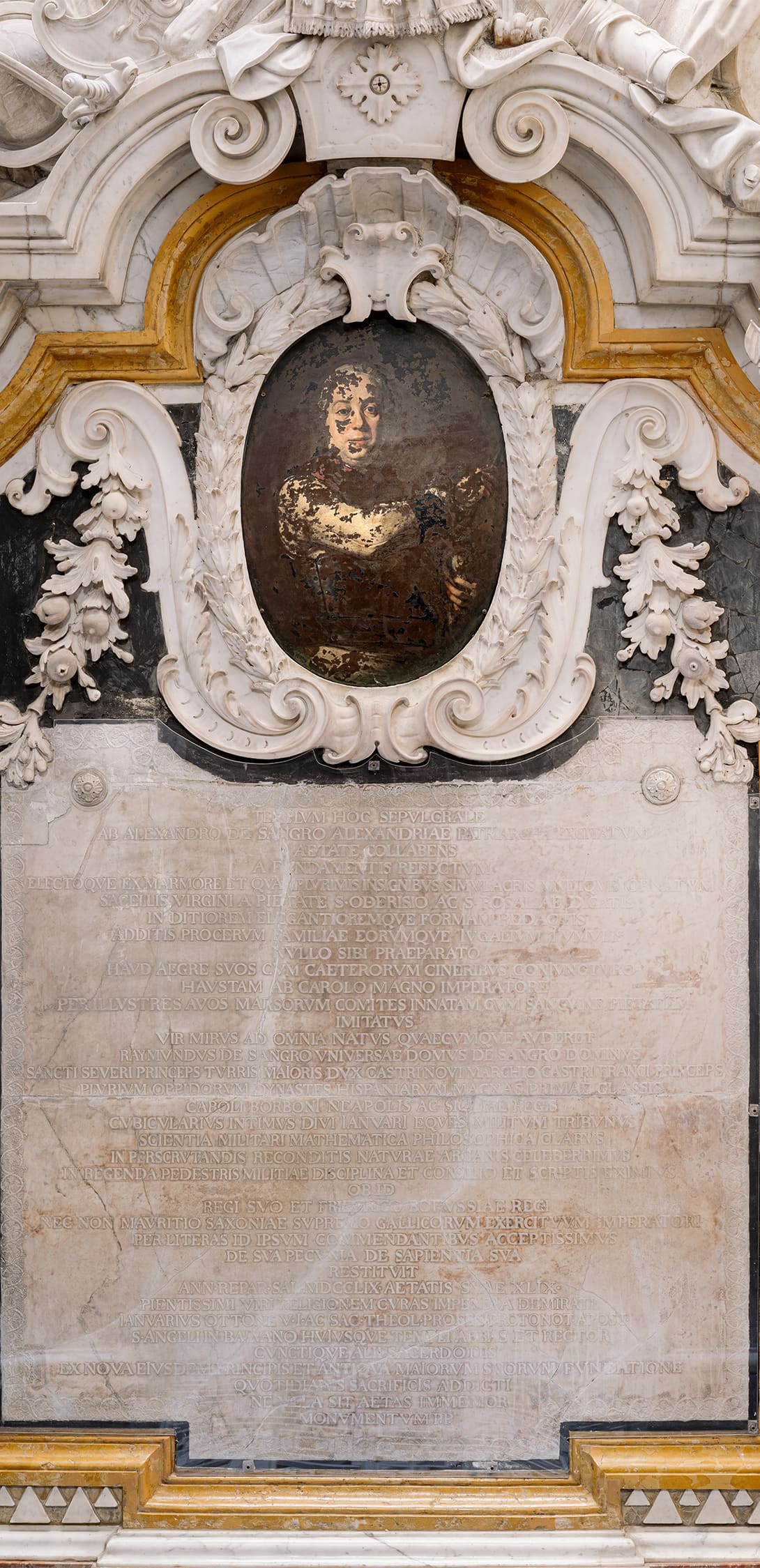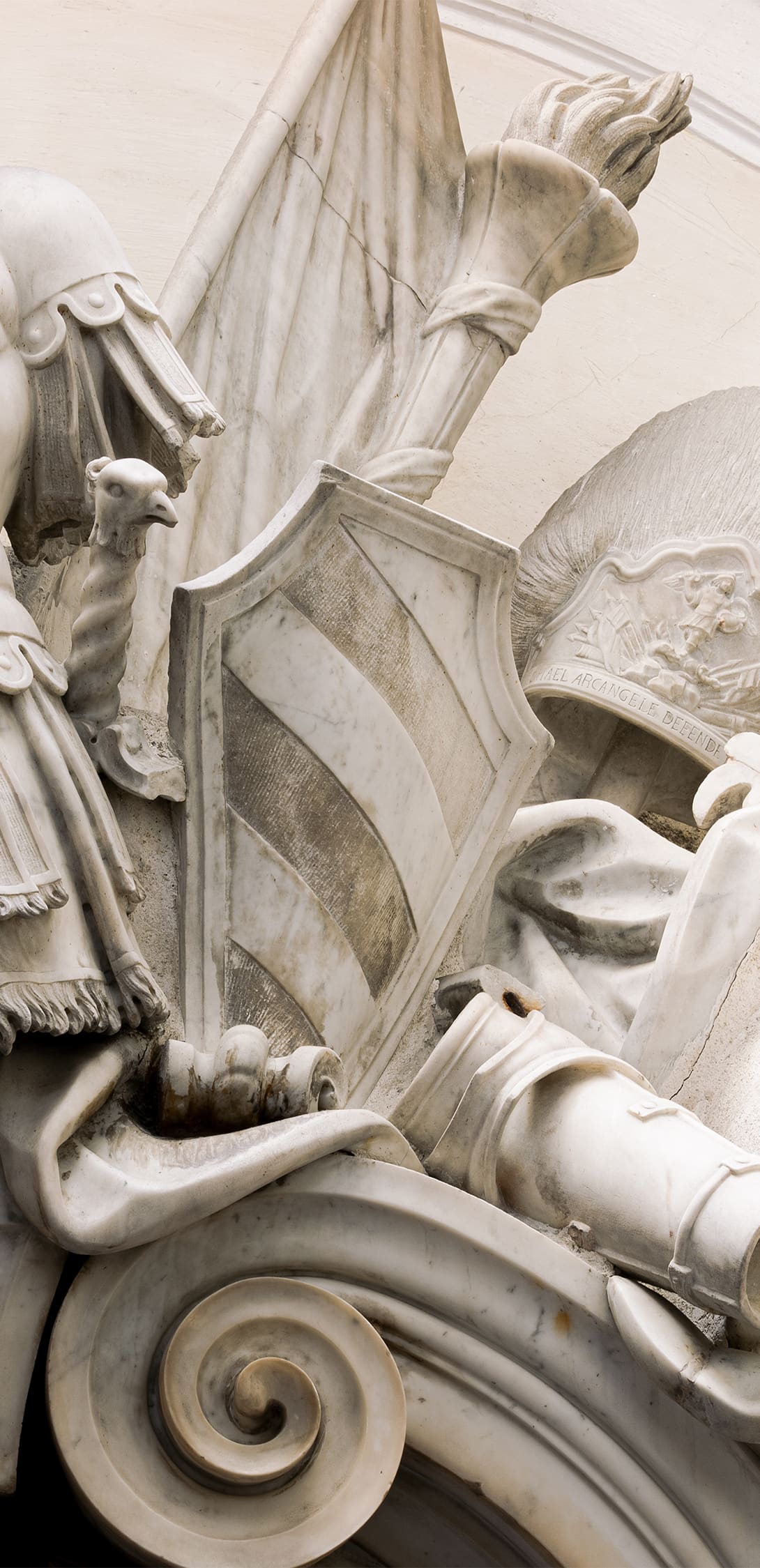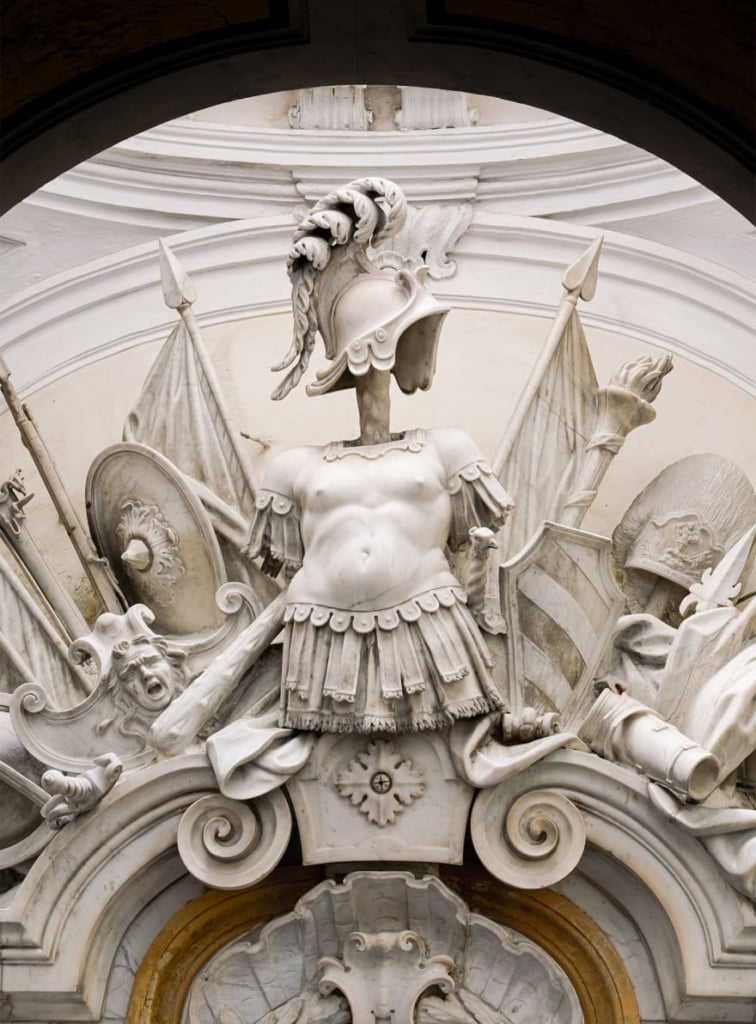
A TESTAMENT IN STONE
Unlike the other funerary monuments, the Tomb of Raimondo di Sangro appears sober, almost severe. Designed by Russo in 1759, when the seventh Prince of Sansevero was still alive, it comprises two essential elements: a complex of sculptured emblems set in a great arch, in seventeenth-century style, and a plaque with a long eulogy to di Sangro. Between these is the marble frame with the Portrait of the Prince.
The symbols Raimondo di Sangro wanted for his tomb commemorate his earthly glory earned through his military success and scientific-literary output. A Breastplate and a helmet are surrounded by insignia, flags, pikes, halberds and other weapons. There are also books, parchments, set squares and a globe. From the far right of the arch hangs the sash of the Knights of the Order of San Gennaro, a decoration he received in 1740.

